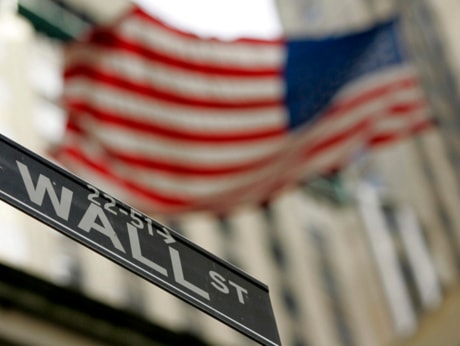CHICAGO — If there’s a word that best sums up investors’ views toward stocks heading into 2010, it’s probably “wary.”
The market plunge of 2008 scarred psyches as well as portfolios. And even though the Standard&Poor’s 500 stock index is up more than 20 per cent this year, few could forget the falling-off-a-cliff feeling when the downturn carried over into 2009 and stocks continued to plummet another 25 per cent.
The ride is likely to be bumpy again in 2010. Volatility is here to stay, says S&P’s chief investment strategist Sam Stovall. He cites the impact of hedge funds, computerized trading, inverse ETFs where investors can profit from a declining market, and “the mindset that you really can’t engage in buy-and-hold any more.”
But historical precedent suggests it would be wise to stay with the market.
As the nine-month-old bull market closes in on the one-year mark, Stovall thinks it’s noteworthy that all but one of the 14 previous bull markets since 1932 survived into a second year. They then averaged 12.5 per cent gains during that year.
“History indicates that we have a very good chance of the market recording an up year that ends up with gains in the low double digits,” he says.
Stovall sees the S&P 500, which has hovered recently near 1,100, rising to as high as 1,250 next year.
In an interview with The Associated Press, he discussed his outlook for the year and suggested some sectors and individual stocks that investors might look to for strong gains.
Here are highlights of his comments:
Q: Should investors be aggressive in this bull market or should they be leery of a pullback?
A: I think we already had the pullback that people have been expecting. From mid-June to mid-July of this year, the market declined seven per cent.
But if you are worried about a market decline, don’t be overly aggressive. It’s really only cash or government bonds that tend to hold up well when the market declines. Don’t go too far out on the risk curve. Use the old adage that your age should equal your exposure to bonds as a good guide.
Q: What are the chances of the economy retreating again — the second part of a “double dip” — and stocks sinking accordingly?
A: We don’t foresee a double dip. From an economic standpoint, things look good, not great. We see slow but steady growth, low inflation because of high unemployment, a Fed that’s going to remain accommodative (with low interest rates) until at least the fourth quarter of 2010, and a fairly weak U.S. dollar into 2011.
There are a lot of potential land mines out there. Commercial real estate is one of them. But we’re not as concerned as we were about residential construction.
Q: Stocks now are more expensive than they have been for most of the last 60 years, based on price-to-earnings ratios. Why shouldn’t investors see them as inflated?
A: The reason we’re trading at such an elevated P/E — currently 86 for the S&P 500, compared with the historical average of 16 — is that the most commonly used P/E ratio is based on earnings from the trailing 12 months. And in the fourth quarter of 2008 the S&P recorded its first loss ever in earnings. We don’t expect that to repeat itself.
Using estimates for 2010 earnings instead of the trailing 12 months, it is a more palatable 21. So the P/E based on trailing earnings is a misleading indicator at the moment.
Q: What sectors of the market do you expect to do well in 2010?
A: We think it’s wise to stick with the cyclical sectors at this point, particularly energy, materials and industrials. We have underweight ratings on the more defensive areas — utilities, telecommunications, staples and health care. We think they will underperform the S&P 500.
Q: What’s the outlook for technology stocks after outperforming all other domestic categories in 2009?
A: We favour tech stocks. They traditionally do well in the second year of a bull market. But we basically feel they have more of a neutral stance at this point.
S&P analysts have “buy” or “strong buy” recommendations on Hewlett-Packard Co. (HP), Cisco Systems Inc. (CSCO) and Intel Corp. (INTC), among others.
Q: Do you see the momentum in emerging market stocks continuing?
A: Right now we’re taking a neutral stance. They’ve already done well, so a great year will probably be traded for a good year in 2010.
For the long-term investor, though, I think demographics and the economic growth in China and India in particular indicates that you do need to be in those areas. The growth prospects are still very strong.
Q: Any other advice for picking stocks?
A: You can benefit by sticking with companies that consistently raise earnings and dividends. S&P has an earnings and dividend quality ranking which basically looks back 10 years to say how consistently have companies raised their earnings and dividends.
Based on that, I came up with a proxy for each of the 10 sectors in the S&P 500. Here are top companies in each sector:
Consumer discretionary — General Parts Co. (GPC)
Consumer staples — Altria Group Inc. (MO)
Energy — Chevron Corp. (CVX)
Financials — Hudson City Bancorp Inc. (HCBK)
Health care — Johnson&Johnson (JNJ)
Industrials — Eaton Corp. (ETN)
Materials — Bemis Co. Inc. (BMS)
Technology — Linear Technology Corp. (LLTC)
Telecommunications — CenturyTel Inc. (CTL)
Utilities — FPL Group Inc. (FPL)
———
On the Net:
www.standardandpoors.com
